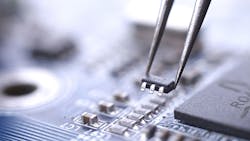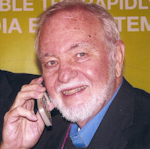Who would ever want to find obsolete or discontinued parts and why? One answer is that engineers assigned to keep older equipment working or manufacture a new batch of older designs often need to track down semiconductor devices and ICs that were seemingly phased out long ago. Just because a part is no longer available from its original manufacturer doesn’t mean it is lost forever. Many of these parts may be available from an alternate source. Several semiconductor manufacturers specialize in making older parts. You can’t call them obsolete parts if they continue to be used in older industrial and military equipment that is still in active use.
Just recently I ran across one such company in Phoenix, Ariz. Lansdale Semiconductor focuses on making over 3,000 applications ICs to serve automotive, commercial, military, aerospace, and telecommunications organizations that still need them. They reproduce the exact parts made by original sources like AMD, Fairchild, Freescale (formerly Motorola), Harris, Intel, National, Philips (Signetics), and Raytheon.
I learned of Lansdale from the company’s recent press release announcing it would be making two popular RF parts previously made by Motorola. These are the ML1490, a popular AGC part, and the ML1350, a widely used IF amplifier chain with AGC. What amazed me is the huge number of other parts the company makes. Check out the website for an impressive mix of older parts.
Other such sources include Rochester Electronics, which is authorized by more than 50 semiconductor manufacturers to make discontinued semiconductor devices. Rochester uses a mix of acquired remaining inventory, buying wafers and die, or the IC IP. They also reverse engineer parts and redesign them to specifications matching the original. The company has an impressive inventory, showcased on its website.
If you are fretting over the availability of an older part you can’t find, consider these two resources before giving up hope. There may even be a Chinese supplier, if nothing else.
There are still many older parts in use. Popular op amps like the 741 and 301 are still available. And you can still find multiple versions of the well-known 555 timer IC. Regulators like the 7805 and LM317 are still widely used. And what about the long-popular 7400 series of logic devices and their offshoots? They are still in play. And where do you get an 8080 or 8051/2 micro? As for discretes, you can still get 1N4001 and 1N4148/1N914 diodes as well as 2N3904 and 2N2222 transistors. I wonder if they will ever go away. As long as there hobbyists, experimenters, and educational institutions, you will see these parts in catalogs and kits. These ICs still have the older DIP designs that are easier to handle and breadboard with.
Why get rid of a part just because it is old and uses ancient technology? Economics is the main reason. But also, as long as the part does the job technically, why not use it? It should be inexpensive. I suppose that it would be bad engineering practice using an older part in new designs since there may not be a second source. But you could be safe if you are using a “legacy” part. Keep in mind that you can still get popular vacuum tubes of the past. They are not completely obsolete yet.
A 12AX7, anyone?


